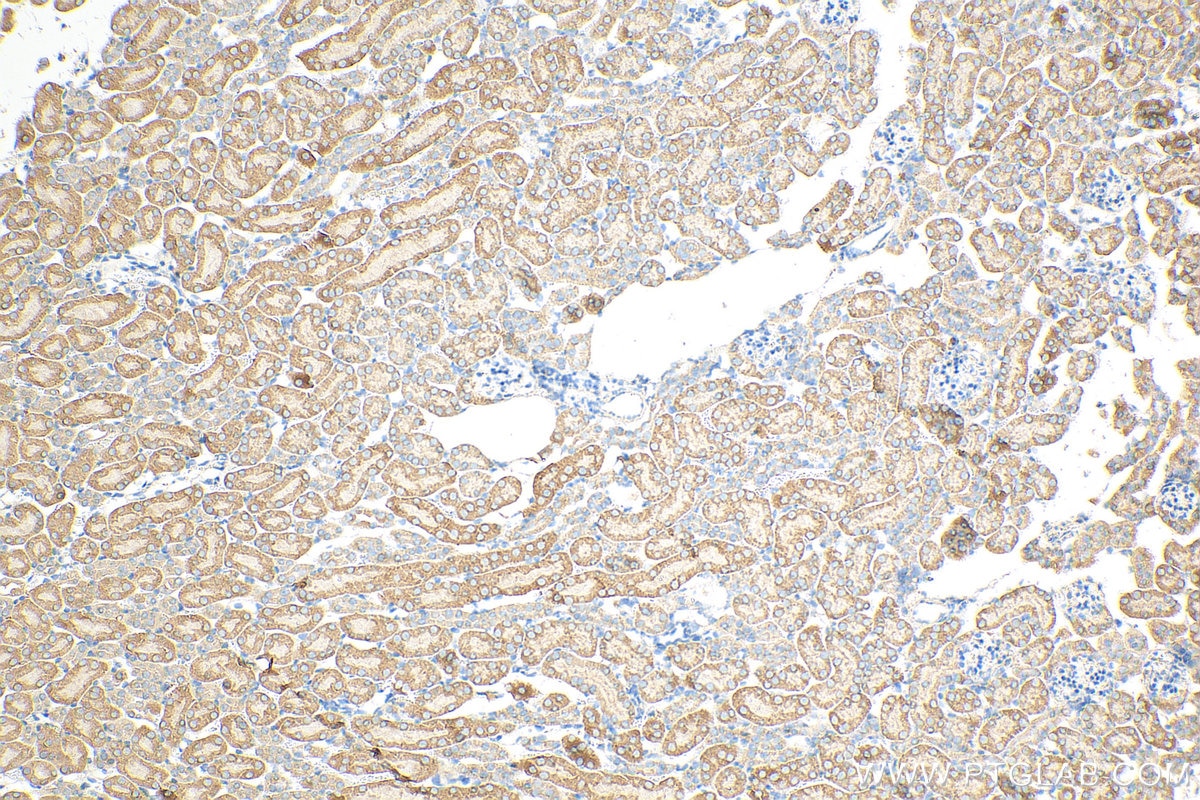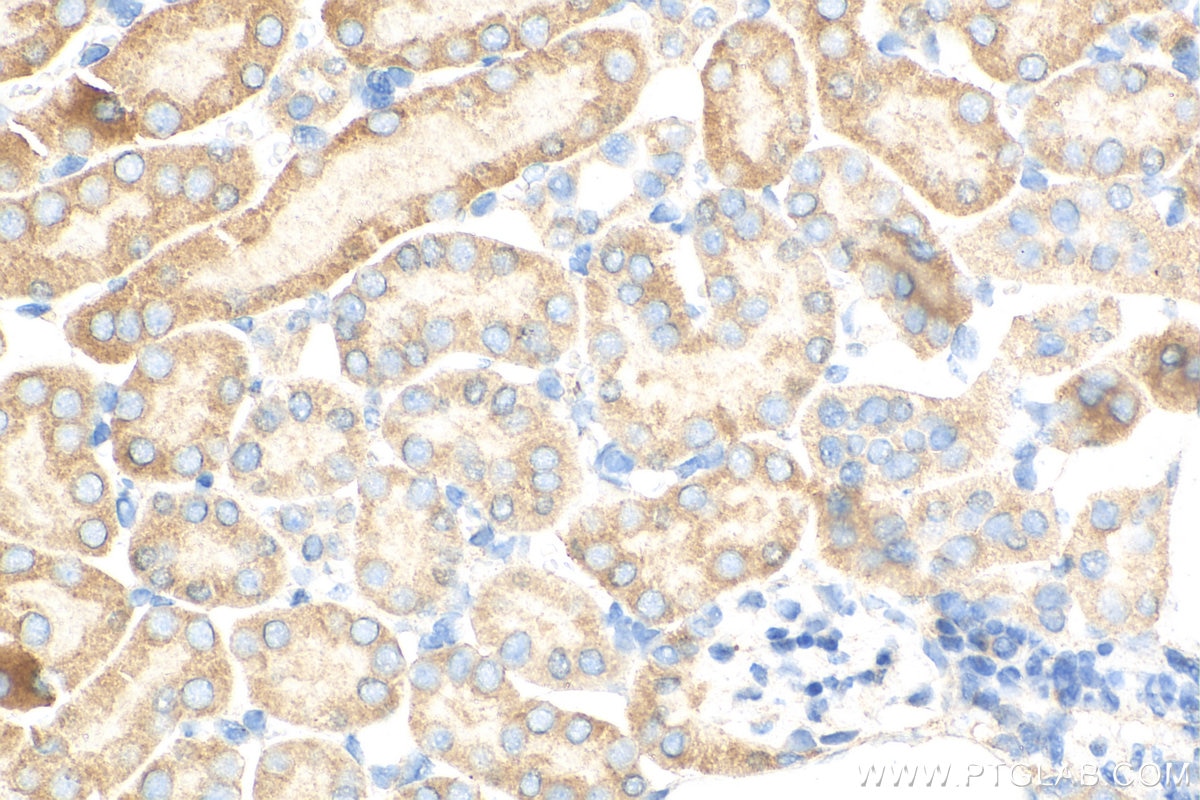Validation Data Gallery
Tested Applications
| Positive IP detected in | HEK-293 cells |
| Positive IHC detected in | mouse kidney tissue Note: suggested antigen retrieval with TE buffer pH 9.0; (*) Alternatively, antigen retrieval may be performed with citrate buffer pH 6.0 |
Recommended dilution
| Application | Dilution |
|---|---|
| Immunoprecipitation (IP) | IP : 0.5-4.0 ug for 1.0-3.0 mg of total protein lysate |
| Immunohistochemistry (IHC) | IHC : 1:50-1:500 |
| It is recommended that this reagent should be titrated in each testing system to obtain optimal results. | |
| Sample-dependent, Check data in validation data gallery. | |
Published Applications
| WB | See 6 publications below |
Product Information
12266-1-AP targets SCAP in WB, IHC, IP, ELISA applications and shows reactivity with human samples.
| Tested Reactivity | human |
| Cited Reactivity | human, mouse |
| Host / Isotype | Rabbit / IgG |
| Class | Polyclonal |
| Type | Antibody |
| Immunogen |
CatNo: Ag2937 Product name: Recombinant human SCAP protein Source: e coli.-derived, PGEX-4T Tag: GST Domain: 601-905 aa of BC020987 Sequence: LQGNLIVVGRSSGRLEVWDAIEGVLCCSSEEVSSGITALVFLDKRIVAARLNGSLDFFSLETHTALSPLQFRGTPGRGSSPASPVYSSSDTVACHLTHTVPCAHQKPITALKAAAGRLVTGSQDHTLRVFRLEDSCCLFTLQGHSGAITTVYIDQTMVLASGGQDGAICLWDVLTGSRVSHVFAHRGDVTSLTCTTSCVISSGLDDLISIWDRSTGIKFYSIQQDLGCGASLGVISDNLLVTGGQGCVSFWDLNYGDLLQTVYLGKNSEAQPARQILVLDNAAIVCNFGSELSLVYVPSVLEKLD 相同性解析による交差性が予測される生物種 |
| Full Name | SREBF chaperone |
| Calculated molecular weight | 1279 aa, 140 kDa |
| Observed molecular weight | 140 kDa |
| GenBank accession number | BC020987 |
| Gene Symbol | SCAP |
| Gene ID (NCBI) | 22937 |
| RRID | AB_10697683 |
| Conjugate | Unconjugated |
| Form | |
| Form | Liquid |
| Purification Method | Antigen affinity purification |
| UNIPROT ID | Q12770 |
| Storage Buffer | PBS with 0.02% sodium azide and 50% glycerol{{ptg:BufferTemp}}7.3 |
| Storage Conditions | Store at -20°C. Stable for one year after shipment. Aliquoting is unnecessary for -20oC storage. |
Background Information
SCAP is a regulatory protein that is required for the proteolytic cleavage of the sterol regulatory element-binding protein (SREBP). SCAP is an integral membrane protein located in the endoplasmic reticulum (ER). One of the cytosolic regions of SCAP contains a hexapeptide amino acid sequence, MELADL, that functions to detect cellular cholesterol. When cholesterol is present, SCAP undergoes a conformational change that prevents it from activating SREBP and cholesterol synthesis does not occur. SCAP has 4 isoforms with MW 140, 98, 96 and 85 kDa (refer to UniProt: Q12770).
Protocols
| Product Specific Protocols | |
|---|---|
| IHC protocol for SCAP antibody 12266-1-AP | Download protocol |
| IP protocol for SCAP antibody 12266-1-AP | Download protocol |
| Standard Protocols | |
|---|---|
| Click here to view our Standard Protocols |
Publications
| Species | Application | Title |
|---|---|---|
EMBO Rep Lin28 enhances de novo fatty acid synthesis to promote cancer progression via SREBP-1. | ||
PLoS Pathog Epstein-Barr virus subverts mevalonate and fatty acid pathways to promote infected B-cell proliferation and survival. | ||
Sci Rep TDP-43 regulates cholesterol biosynthesis by inhibiting sterol regulatory element-binding protein 2. | ||
bioRxiv Identification of the novel role of sterol regulatory element binding proteins (SREBPs) in mechanotransduction and intraocular pressure regulation | ||
Biochem Biophys Rep Hepatic HSD17B6 is dispensable for diet-induced fatty liver disease in mice |



